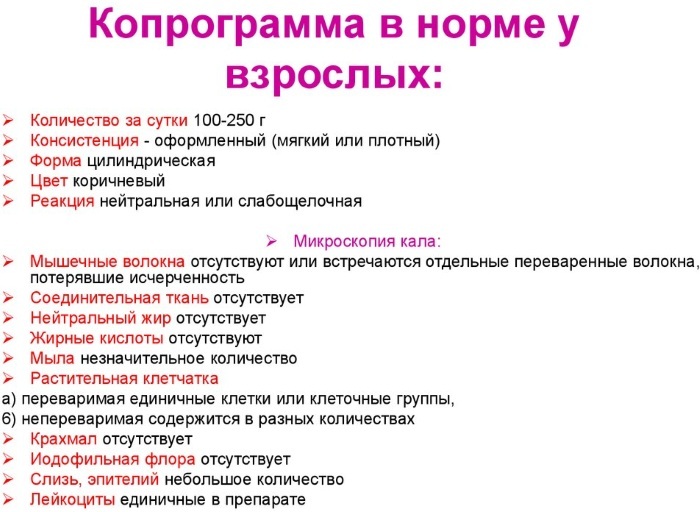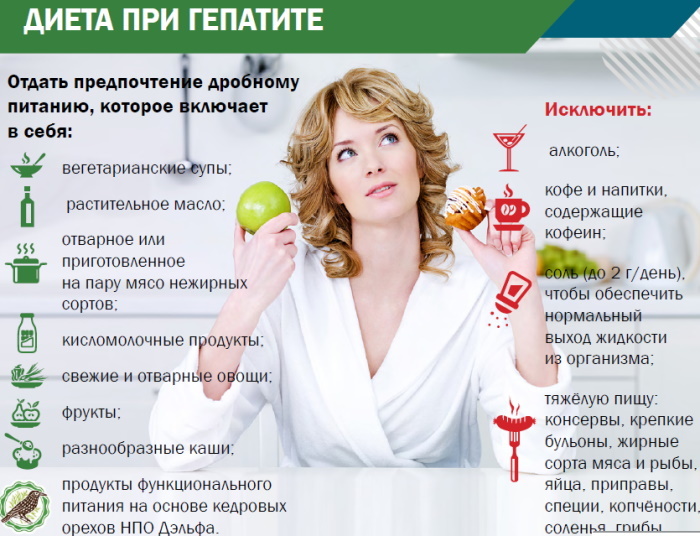The bacterium that inhabits different parts of the digestive system is called Helicobacter pylori. It is capable of provoking the development of diseases (gastritis, duodenitis, gastric ulcer and duodenal ulcer intestines), the treatment of which involves adherence to complex regimens aimed at getting rid of microorganism.
Record content:
- 1 Symptoms of the disease
- 2 Why are Helicobacteria dangerous?
- 3 Requirements for medicinal products
-
4 Varieties of schemes
- 4.1 First line
- 4.2 Second line
-
5 Treatment regimens for gastritis with high and low acidity
- 5.1 With increased acidity of the stomach
- 5.2 With low stomach acidity
- 6 Can it be cured without antibiotics
-
7 Treatment with folk remedies
- 7.1 Propolis
- 7.2 Flax seeds
- 7.3 Berries and healthy vegetables
- 7.4 Herbs
- 8 Diet
- 9 Video about the disease
Symptoms of the disease
Gastritis, which develops under the influence of bacteria, is characterized by the following symptoms:
- constant pain in the stomach;
- the appearance of increased body temperature;
- belching and heartburn;
- digestive disorders (bloating, discomfort, constipation);
- feeling of nausea;
- the appearance of a bad taste in the oral cavity is possible.
The pathology is characterized by pain syndrome, which is more clearly expressed in the periods after eating. Often, severe severe pains develop at night. In isolated cases, bleeding from the stomach was observed.
If a person has signs of illness, then this is an immediate reason for contacting a gastroenterologist. The diagnosis is made after passing a test for the presence of the bacteria. Research is mandatory in the case when similar symptoms are observed in people living with the patient, or the disease becomes chronic.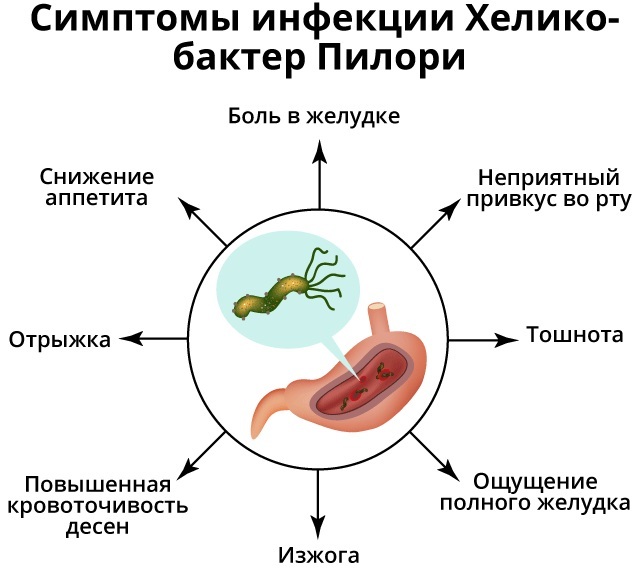
The list of possible ways to detect a pathogen includes:
- Urease (breath) test refers to less informative diagnostic methods.
- Stool examination allows you to determine the presence of bacteria. Serves as a reliable diagnostic tool.
- A blood test differs from previous methods by detecting antibodies in the plasma that are produced by the body in relation to the bacteria. The test often shows false results in immunocompromised people.
- Biopsy examination is the most reliable way, biological material for which can be obtained during gastroscopy. Before running the test, preliminary preparation is required.
Why are Helicobacteria dangerous?
Helicobacter pylori was discovered more than a century ago (in the 19th century). The involvement of the bacteria in the development of chronic gastritis was proven in 1994.
The contact-household method is used by the spread of the microorganism:
- the use of common household and hygiene items;
- in moments of close contact (when kissing).
When infected, the patient may show signs or be asymptomatic. In this case, a person becomes a carrier of the bacteria. Features of the course of the disease or the absence of symptoms - it all depends on the strain of the pathogen and the possibility of the defenses of the human body.
However, in medical practice, more asymptomatic cases of infection are known than observation of pathologies.
The biggest danger from Helicobacter is its ability to conduct life, increase population growth in acid, which is inherent in the digestive system. Due to its shape (in the form of a spiral) and the presence of flagella, the bacterium is able to invade the dense layers of the mucous membrane that protect the digestive tract from acidic effects.
The microorganism penetrates into the mucous tissues, in which it increases its population. The result of the introduction of the vital activity of Helicobacter pylori in the digestive system is the formation of a large amount of toxins that destroy the tissues of the stomach. In this case, the protective layers gradually disappear.
The result of the activity of the pathogen is that the gastric juice begins to contact directly with the bare cells of the mucous membrane, thereby causing inflammatory processes in the form of gastritis. Gastroenterologists pay attention to the fact that Helicobacter pylori is not the only cause of the disease, but as an important aspect that contributes to the development of the disease.
Requirements for medicinal products
The principles of infection therapy include the following provisions:
- The use of a multicomponent scheme, which can consist of at least three drugs that act on the bacterium.
- Strict adherence to the prescribed treatment regimen, which implies the following steps:
- taking strictly certain drugs;
- the appointment of optimal doses;
- determination of the optimal course of therapy.
- Taking into account the drug interactions of the prescribed agents.

Treatment of gastritis with Helicobacter pylori (the treatment regimen is prescribed in the protocol) can be based on 2, 3 or 4 medicinal components. In medical practice, the effectiveness and efficiency of three-component therapy has been proven. A two-component prescription shows failure in 80% of patients.
Experts impose the following requirements on drugs to eliminate bacteria:
- maintaining a constant high level of destruction of bacteria;
- prostate and ease of medication;
- providing a small number of side effects (especially allergic reactions);
- budgetary cost of the course;
- effective impact on the disease;
- the minimum sensitivity of the bacteria to the frequency of eradication (destruction).
Varieties of schemes
The destruction of the bacterial colony is carried out using antibacterial agents. In cases where the microorganism is detected in addition to the primary patient and in other family members, then everyone undergoes therapy in order to exclude the possibility of re-infection.
In modern times, experts are increasingly inclined to believe that it is not necessary to treat bacteria if the patient does not have signs of the disease (gastritis or ulcer).
Otherwise, patients should understand that self-medication is unacceptable, since only specialists (gastroenterologists) are capable of determine the required list of drugs, assess the balance of harm and benefit from therapy, prescribe the optimal dosage and course treatment.
The world scientist consensus has determined that no one treatment regimen for a bacterium provides guarantees of its destruction, therefore, therapy implies adherence to two lines. This means that the patient initially undergoes treatment on the first line, and if the result is not successful, on one of the second line regimens.
First line
The first line is characterized by a three-component treatment. It refers to a universal bacterial therapy regimen, which includes 2 antibiotics and 1 drug from a series intended for the treatment of acid-dependent diseases of the gastrointestinal system. Its purpose is to reduce the production of hydrochloric acid in the stomach.
The treatment regimen includes drugs of choice, taken in standard doses, which are summarized in the table.
| Name | Dosage, mg | Multiplicity of reception |
Agents that inhibit gastric acid secretion (proton pump blockers)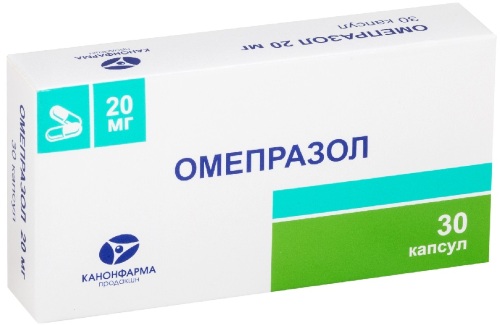 | ||
| Omeprazole | 20 | 2 |
| Pantoprazole | 40 | 2 |
| Lansoprazole | 30 | 2 |
| Pairs of antibacterial drugs | ||
| Clarithromycin + Metronidazole | 200+400 | 2+3 |
| Amoxicillin + Clarithromycin | 1000+500 | 2+2 |
| Amoxicillin + Metronidazole | 500+400 | 3+3 |
The standard course of therapy is a week. In the course of studies, it was found that the effect of treatment increases with an increase in its duration up to 10 days or 2 weeks.
Second line
Treatment of gastritis with Helicobacter pylori (the second line scheme includes 4 components) is based on a combination of two antibiotics with drugs that inhibit the secretion of gastric juice and substances based on bismuth. The treatment regimen is summarized in the table.
| Name | Dosage, mg | Multiplicity of reception |
| Proton pump blockers | ||
| Omeprazole | 20 | 2 |
| Pantoprazole | 40 | 2 |
| Lansoprazole | 30 | 2 |
| Bismuth preparations (optional) | ||
| Colloidal bismuth subcitrate or bismuth subsalicylate or bismuth gallate | 120 | 4 |
Antibacterial drugs | ||
| Tetracycline + Metronidazole | 500+250 | 4+4 |
| Tetracycline + Tinidazole | 500+250 | 4+4 |
The treatment regimen is designed for 7-10 days with the possibility of extending up to 2 weeks.
Treatment regimens for gastritis with high and low acidity
To provide the digestive system with its functions, the secretion of gastric juice, which contains hydrochloric acid, is necessary. Every day the stomach produces it in a volume of 1.5-2 liters. The measured acidity indicator is PH (conventional units of activity of hydrogen ions). The neutral PH is 7, the maximum acidity is 14 and the minimum alkali is 1.
All changes in the ratio of the produced acid to the alkali, which should neutralize it, will introduce a balance shift to either side. The process causes disturbances in the work of the stomach, aggravates the course of diseases, including gastritis.
With increased acidity of the stomach
Hyperacid gastritis appears under the influence of high acidity. In 90% of cases of observation of the chronic course of the disease, Helicobacter pylori is considered to be the culprit.
Treatment is aimed at eliminating the microorganism and reducing the amount of hydrochloric acid excreted. The treatment regimen must include proton pump inhibitors, which are not addictive and have a small number of side effects.
The list of drugs includes:
- Esomeprazole;
- Omez;
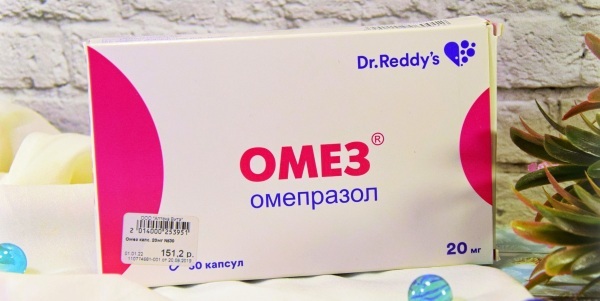
Omez - Omeprazole;
- Rabeprazole-SZ;
- Prazol;
- Pantoprazole.
Contraindications to taking medications are:
- children under 12 years of age;
- During pregnancy and breastfeeding;
- the presence of allergic reactions to the components of the drug.
The treatment regimen for gastritis with high acidity should also include histamine receptor blockers, which inhibit the production of hydrochloric acid.
A number of drugs include:
- Zantak;
- Ranitidine;
- Ranisan;
- Famotidine;
- Kvamatel;
- Reni;
- Maalox;
- Almagel.
The regimen should include bismuth preparations, and doctors often prescribe pairs as antibiotics: Clarithromycin with Amoxicillinoi or Metronidazole with Tetracycline.
With low stomach acidity
Hypoacid gastritis or low acidity is characterized by inflammation that affects the mucous membranes of the stomach, it develops against the background of a deficiency in the functions of cells that produce hydrochloric acid. Pathology is usually observed in a chronic form with periodic exacerbations.
Treatment of gastritis with Helicobacter pylori (the scheme consists of three components) is carried out with antibiotics, proton pump inhibitors and bismuth-based agents. In addition, experts prescribe the intake of enzymes that improve the secretion of gastric juice, as well as prokinetics.
They affect the motility of the digestive system and the rate at which food is removed from it. These are drugs based on metoclopramide and domperidone (Domet, Motilak, Motilium).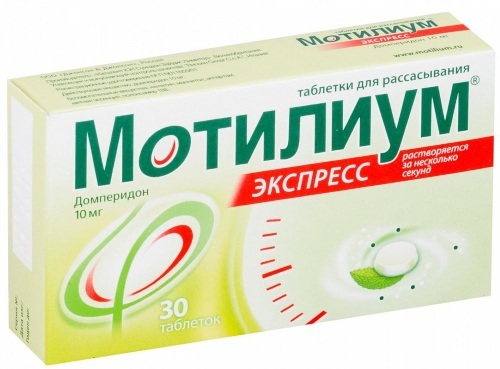
It is contraindicated to use them in the following cases:
- bleeding in the digestive system;
- intestinal obstruction;
- children under 5 years of age;
- oncology.
The substances of the enzyme series include preparations of pepsin and a hydrochloric acid component:
- Acidin-pepsin;
- vitamin B12;
- Abomin;
- Festal.
Medicines as contraindications have only the presence of sensitivity to their components. Therapy for gastritis with low acidity is distinguished by its duration of use and an integrated approach.
Can it be cured without antibiotics
Only antibiotics can kill bacteria. Treatment of gastritis with Helicobacter pylori is complex in nature with the inclusion of herbal medicine. The method offers alternative and safe recipes that contribute to the destruction of the pathogenic microorganism and the restoration of the functionality of the digestive system.
Also, treatment includes maintaining a healthy lifestyle, dieting, taking probiotics, and using medicinal herbs.
Treatment with folk remedies
Traditional medicine methods offer many recipes for tinctures, herbal decoctions, propolis, berry compotes. All medicines should be taken by mouth. For the period of treatment, gastroenterologists may recommend a complete replacement of tea and coffee with herbal decoctions.
Any funds can be used only after consultation with the attending physician or as directed. Only a specialist is able to choose the most suitable medication and alternative treatment.
Propolis
Propolis has long been known for its properties:
- antibacterial;
- antiseptic;
- anti-inflammatory;
- regenerative abilities in relation to mucous membranes;
- pain reliever;
- fortifying.
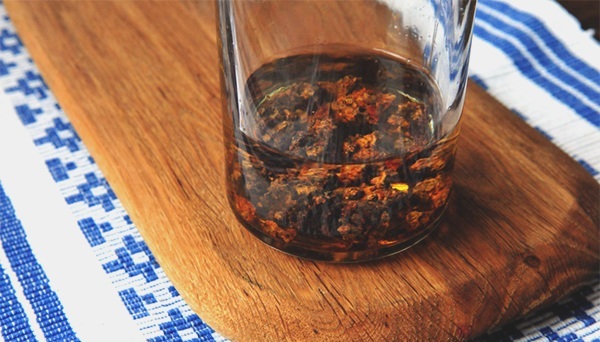
With the help of the substance, the following improvements in the functioning of the digestive system can be achieved:
- relieve bloating;
- reduce the manifestations of nausea and vomiting;
- eliminate fermentation processes in the digestive system;
- reduce acidity.
The main advantages of the substance are manifested in the fact that it acts selectively: it destroys harmful bacteria and does not touch the beneficial flora. The only drawback of the treatment method is the presence of frequent allergic reactions to propolis and bee products.
An alcohol tincture is made from the substance, which can be purchased at a pharmacy or prepared at home. The medicine should be taken at night after meals, 40 drops, which should be dissolved in water or warm milk. In some cases, it is allowed to increase the frequency of admission up to 3 times a day. The course of treatment is usually 3 weeks.
To prepare the product, you must follow the instructions:
- You should take 100 g of the substance and grind it.
- 500 ml of alcohol must be combined with propolis and stirred for 15-20 minutes.
- It is necessary to infuse the product in a dark, dry place for 14 days.
Flax seeds
Traditional healers recommend using flax seeds to protect the mucous membranes of the digestive tract from the toxic effects of stomach acid. During the boiling of such raw materials, it is possible to obtain a viscous liquid that is capable of enveloping mucous membranes and protecting them.
Treatment of gastritis with H. pylori (the scheme should include traditional medicine methods) is often carried out using flax seeds, which are rich in protein and polysaccharides.
They have the following medicinal properties:
- enveloping;
- remove toxins from the body;
- antioxidant;
- antimicrobial;
- strengthen the body's defenses.
Contraindications to the intake of flaxseed are cholelithiasis, pancreatitis, hepatitis.
Seed tincture must be prepared according to the following algorithm of actions:
- 1 tbsp. l. raw materials must be boiled for 5 minutes in 100 g. water.
- The broth should be allowed to brew for 2 hours.
- The resulting product must be consumed in 1 tbsp. l. 3-4 times a day before meals.
Another recipe involves the following steps:
- 3 tbsp. l. raw materials must be poured with 1 liter of boiling water.
- Cover the product, wrap it up and leave warm overnight.
- The next day, you can use a tincture of 1/2 tbsp. 20 minutes before meals.

The course of taking decoctions is 2 months.
Berries and healthy vegetables
The list of permitted foods for gastritis includes:
- bananas;
- apples;
- watermelon;
- persimmon;
- pears;
- cherries.
They can be consumed in limited quantities. Strawberries and currants should be excluded from the diet.
Pear is a fruit that stimulates intestinal motility and neutralizes bacteria. Thanks to the fruits, you can achieve a decrease in intestinal sensitivity, remove harmful substances from the body, and improve the breakdown of fats. The fruit can be eaten raw in small amounts several times a day.
Bananas help prevent constipation as they have an enveloping, anti-inflammatory effect on the mucous membranes. Bananas can be used to make a fruit casserole that is baked in the oven.
Doctors are allowed to take watermelon in small quantities, as it has a beneficial effect on the functions of the digestive system and has diuretic properties.
Apples are only suitable for patients suffering from gastritis with high acidity. They have the properties of stimulating all functions of the digestive system, but it is forbidden to eat acidic fruits.
Baked persimmons are especially useful. It has astringent properties, reduces acidity. Vegetables should also be divided into 2 types: permitted and prohibited.
Beneficial fruits include:
- carrot;
- potato;
- cauliflower;
- beet;
- tomatoes;
- zucchini;
- pumpkin.
All these vegetables are able to neutralize H. pylori and improve the functioning of the digestive system. Vegetables should be eaten boiled.
The list of prohibited vegetables includes:
- family of legumes;
- radish;
- spinach;
- swede;
- garlic;
- onion.
These vegetables can damage the mucous membranes of the stomach, change the acidity.
Herbs
In the treatment regimen for gastritis with Helicobacter pylori, gastroenterologists often include herbal medicine. Chamomile is a common herb. Flowers are allowed for use by children from 4 years old and adults.
The plant has the following properties:
- antispasmodic;
- anti-inflammatory;
- restorative;
- pain relievers;
- hemostatic.
Flowers can be taken in the form of essential oils, which can reduce gas production, relieve pain, normalize the digestive system, as well as increase the secretion of gastric juice and the release of enzymes in the intestines.
A decoction of chamomiles should be consumed 3-4 times a day for 30 minutes. warm before meals. The course of admission is usually designed for 2 weeks.
The recipe for the decoction is to follow the instructions:
- Raw materials should be poured in the amount of 1 tbsp. l. for 1 tbsp. water with boiling water and place in a bath for half an hour or boil for 5 minutes.
- The broth must be wrapped and insisted for 2-3 hours. It's ready to eat.
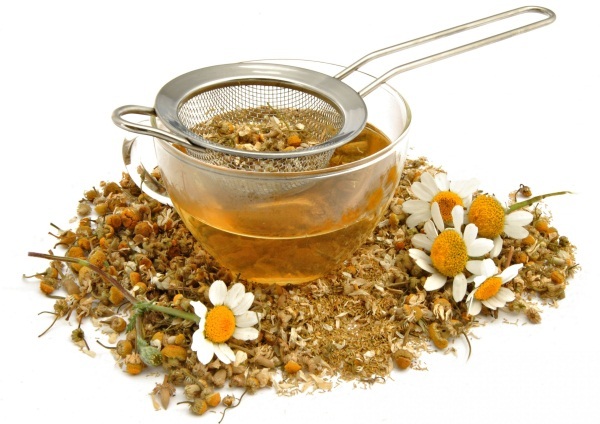
From herbs, you can prepare alcoholic tinctures according to the recipe:
- It is necessary to mix the plant and alcohol in a ratio of 1:10.
- The product should be kept in a dark place for 3 weeks.
In addition to chamomile, you can use celery, the rhizomes of which are crushed and poured with 500 mg of boiling water. The tool must be insisted during the night, and then strain and use half an hour before meals 2-3 times a day.
Centaury and yarrow will also help in the treatment of gastritis, which should be mixed in equal proportions, and then 3 tbsp. l. pour the mixture with a glass of boiling water, cook over the fire for 20 minutes. Then the broth should be drained and divided into 3 parts, which must be drunk during the day.
Another recipe with yarrow involves mixing it with wormwood in a 1: 4 ratio. Then 1 tbsp. l. this mixture needs to be brewed 1 tbsp. boiling water, keep under the lid, wrap for 30 minutes. The broth should be taken in 1 tbsp. l. three times a day.
Hyperacid gastritis can be treated with the following herbs:
- chamomile;
- sage;
- calendula;
- St. John's wort;
- celandine;
- sagebrush;
- nettle;
- yarrow.
With a hypoacid form, the following are used:
- plantain;
- celery;
- aloe;
- mint;
- rose hip.
Diet
The attending physician should prescribe the diet. It involves eating 5-6 times a day in small portions. Gastroenterologists recommend giving preference to pureed food.
The following dishes should be excluded from the diet:
- fried;
- sharp;
- sweet pastries;
- alcoholic drinks;
- mushroom dishes;
- canned food;
- smoking;
- sweet carbonated drinks.
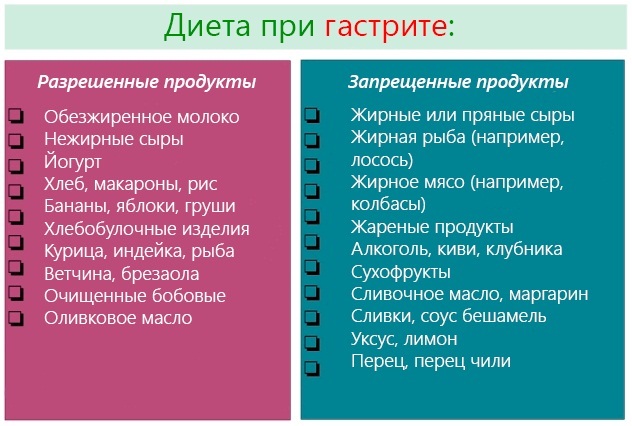
The basis of nutrition should be:
- jelly and compote based on fresh or frozen berries;
- porridge;
- low-fat dairy products (with the exception of hard cheeses);
- soups;
- steamed dishes;
- chicken and quail eggs;
- stale bread.
Patients suffering from an increased level of acidity should remember that meat, fish, sausage, sour fruits and berries increase PH. These foods should be low in the diet.
People with low acidity need to eat foods that stimulate the production of gastric juice. They need to give up foods high in fiber (fresh cabbage, turnips), switch to less salt. However, any diet should contain sufficient amounts of protein, vitamins B, C and E.
It is possible to get rid of the bacteria Helicobacter pylori, which provokes gastritis, only with strict adherence developed treatment regimens that include drugs, traditional medicine, diet and healthy way of life.
Video about the disease
Helicobacter pylori - what is it and how to treat it:


